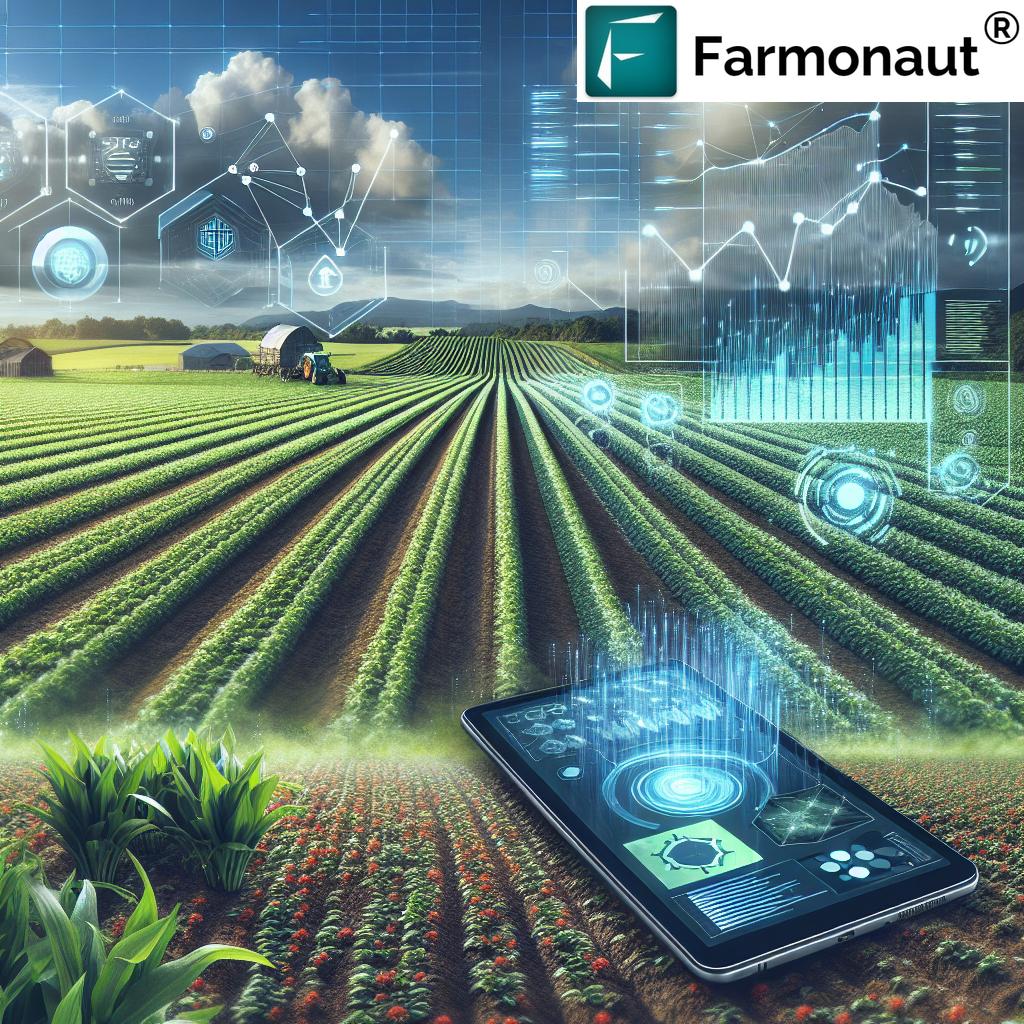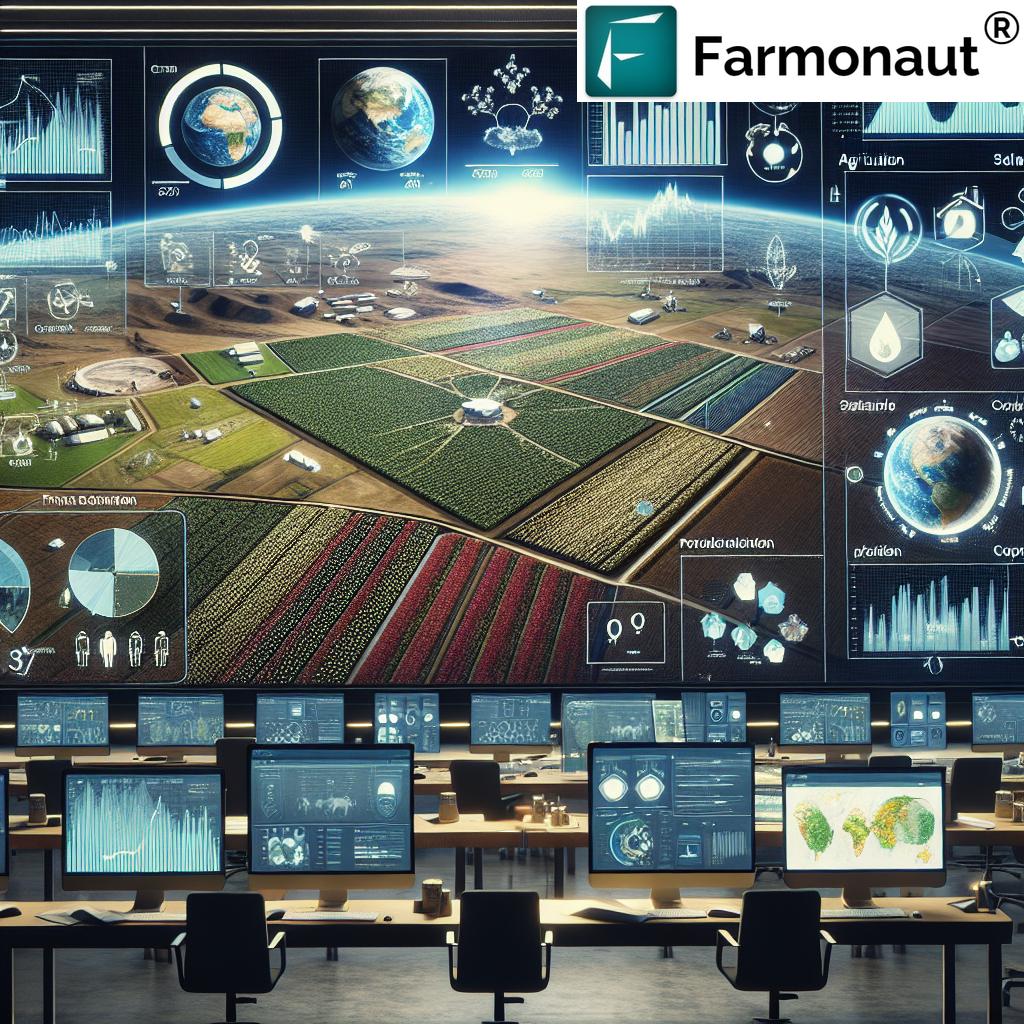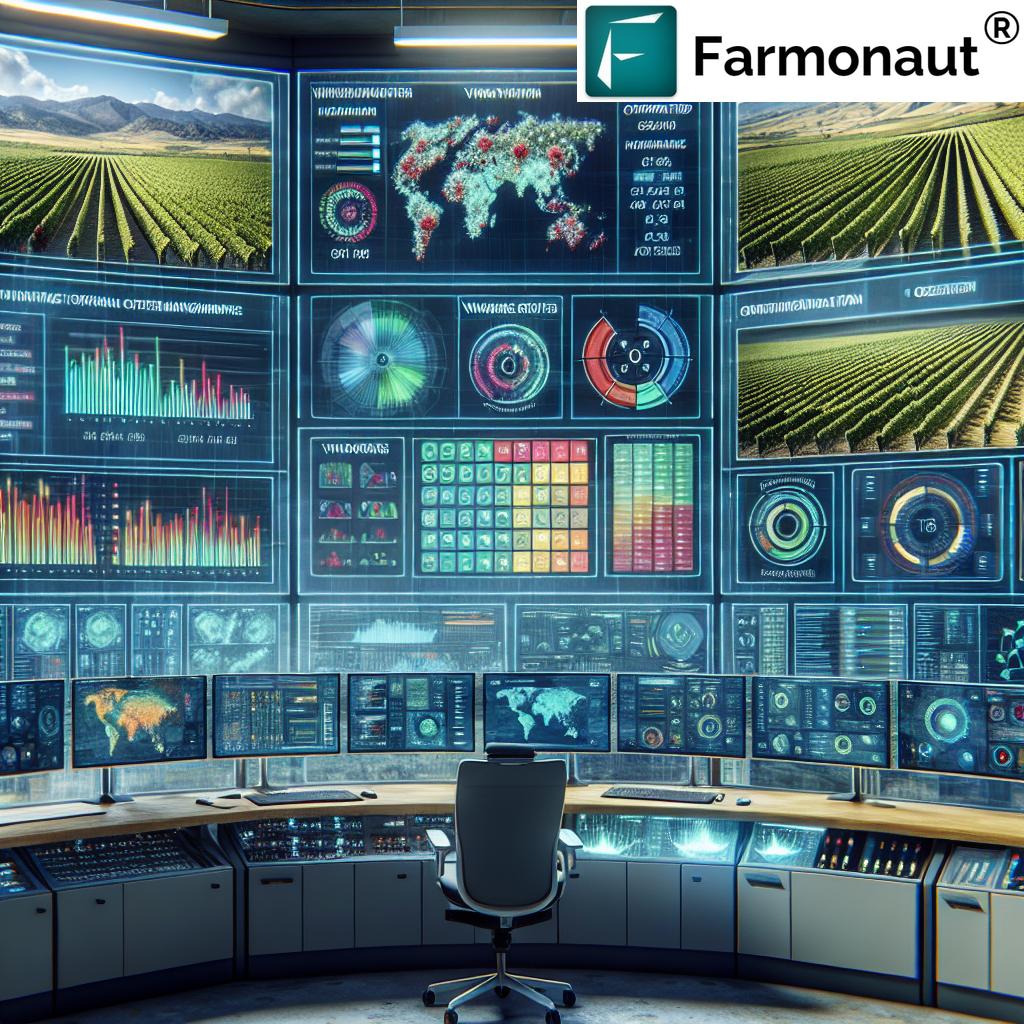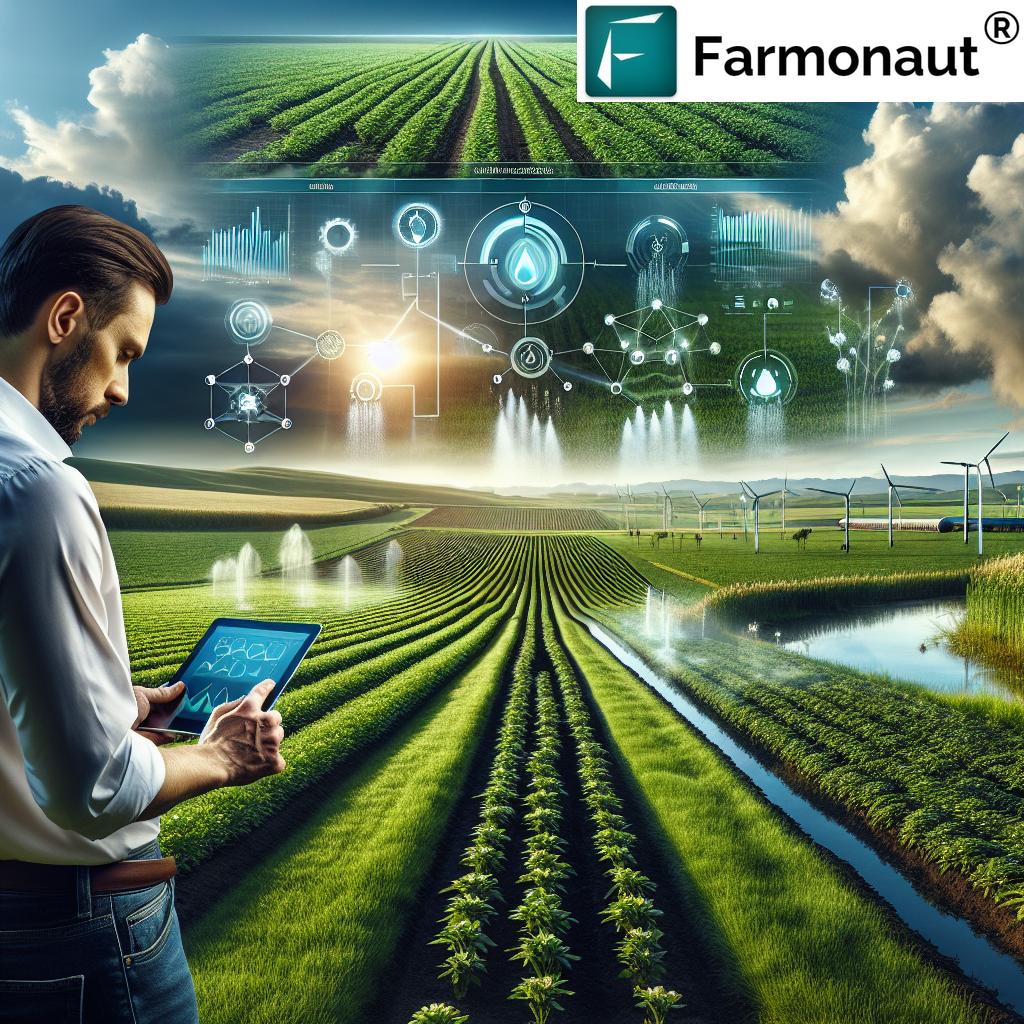Agriculture Analytics: 7 Shocking Ways Data Boosts Yields
Meta Description: Discover how agriculture analytics transforms farming by optimizing yields, improving sustainability, and enabling data-driven decisions for modern farmers globally.
“Farms using analytics have seen up to 20% higher crop yields compared to traditional methods.”
- Summary: What Is Agriculture Analytics?
- The Evolution of Agriculture Analytics
- Key Components: How Data Powers Agriculture Analytics
- Applications and Technologies Fueling Yield Growth
- 7 Shocking Ways Agriculture Analytics Boosts Yields
- Comparative Impact Table: Yield Improvements
- Farmonaut: Pioneering Precision Agriculture Analytics
- Major Benefits of Data-Driven Farming
- Challenges & Considerations in Adopting Agriculture Analytics
- The Future of Agriculture Analytics
- FAQ: Common Questions About Agriculture Analytics
- Conclusion
Summary: What Is Agriculture Analytics?
Agriculture analytics—sometimes called ag analytics, agriculture data analysis, or data-driven farming practices—refers to the collection, analysis, and application of data to enhance farming. Using advanced technologies like satellite imagery, AI, IoT sensors, and machine learning, we can monitor soil conditions, track crop health, predict weather patterns and pest activity, and optimize resource allocation. This shift empowers us to improve productivity, boost yields, and reduce environmental impact—making agriculture more efficient and sustainable.
Unlike input suppliers or machinery manufacturers, solutions like Farmonaut focus on providing data-driven insights, real-time monitoring, actionable recommendations, and transparent agricultural traceability to support all stakeholders—from individual farmers to governments and corporations.
The Evolution of Agriculture Analytics
Historically, farming decisions were made based on tradition, intuition, and personal experience, with only basic tools for record-keeping. The rise of precision farming technologies has radically transformed this landscape. Today, we rely on real-time and historical data—from soil health metrics to high-resolution satellite images—to drive every aspect of farm management.
Farmers and agricultural businesses are embracing advanced agriculture analytics to make better decisions at every stage, leveraging AI and IoT for everything from planting to harvest. This digital transformation means less guesswork, more accuracy, and better use of resources—a true revolution in how we approach crop yield optimization, sustainability, and profitability.
Key Components: How Data Powers Agriculture Analytics
At the heart of agriculture analytics lies a complex ecosystem of data collection, analysis, and decision support systems. Let’s break down the foundation that drives today’s data-driven farming practices:
1. Data Collection: Gathering the Foundation
-
Soil Health Metrics:
We monitor nutrient levels, pH, moisture, and microbial activity to assess plant growth conditions. -
Weather Forecasts & Patterns:
Real-time and historical weather data informs everything from planting schedules to pest risk. -
Crop Growth Stages:
Tracking crop development helps us optimize inputs and predict yield outcomes. -
Pest Activity:
IoT in agriculture uses sensors and remote devices to monitor pest populations and minimize crop loss. -
Satellite & Drone Imagery:
Using multispectral cameras (e.g., via Farmonaut), we capture high-resolution images to identify nutrient deficiencies, assess plant health, and spot early infestations.
The integration of these diverse types of agricultural data lays the base for powerful insights and actionable recommendations.
2. Data Analysis: Extracting Meaningful Insights
-
Big Data & AI Algorithms:
These advanced tools process vast amounts of information to identify patterns, predict outcomes, and flag potential issues. -
Predictive Analytics for Crop Management:
By combining weather, soil, and crop data, we forecast yields and spot future risks—helping farmers plan and allocate resources efficiently. -
Historical Analysis:
Comparing this season’s data with past seasons enables us to refine strategies and correct deficiencies before they impact yield.
3. Agricultural Decision Support Systems
-
Farm Management Systems:
Platforms aggregate and present actionable information, guiding farmers on everything from optimal planting dates to precise irrigation scheduling. -
AI-Based Advisory Systems:
Technologies like the Jeevn AI system (in the Farmonaut platform) deliver personalized recommendations, customized for specific farm conditions and global best practices. -
Risk and Resource Management Tools:
Support systems help us reduce waste, cut costs, and enhance overall crop quality by optimizing input use.
Applications and Technologies Fueling Yield Growth
Modern analytics-driven agriculture encompasses a rich array of technologies and methods designed to improve productivity, sustainability, and profitability for farmers worldwide.
Precision Farming Technologies
- Variable Rate Application: Inputs (fertilizers, water, pesticides) are delivered with precision—only where and when needed—saving money and reducing environmental impact.
- Yield Mapping: GPS and field sensors enable analysis of yield variability across zones, allowing targeted interventions in underperforming areas.
- Real-Time Crop Health Monitoring: Platforms like Farmonaut use large-scale farm management solutions to offer high-resolution crop assessment and timely alerts on stress, helping maximize overall field performance.
- Pest Prediction and Control: Early warnings from predictive analytics help reduce pesticide use and crop loss by enabling timely, targeted intervention.
- Climate Adaptation Tools: We can proactively adjust our cropping strategies by analyzing weather trends and forecasts—essential for climate resilience.
- Supply Chain Optimization: Analytics-driven logistics and fleet management save money, reduce waste, and deliver fresher products between farm and market.
IoT in Agriculture: Bridging Field and Cloud
- Sensors track soil moisture, weather, light intensity, and pest populations.
- Farmonaut’s resource management tools enable farmers to visualize, interpret, and act on data from anywhere using Android, iOS, or web.
- API access extends data usage for businesses and developers: Farmonaut API. See API Developer Docs.
Blockchain-Based Traceability for Supply Chain Trust
- Blockchain product traceability secures every step in the supply chain—critical for food safety, provenance, and reducing fraud in agricultural trade.
Carbon Footprinting and Environmental Management
- Farmonaut’s carbon footprinting solutions help agribusinesses monitor, report, and actively reduce emissions, supporting both regulatory compliance and sustainability goals.
Agriculture Analytics: 7 Shocking Ways Data Boosts Yields
We leverage agriculture analytics to unlock powerful improvements in productivity, resource efficiency, and sustainability. Below, we explore seven transformative ways data-driven technologies are revolutionizing agriculture and helping farmers maximize their potential.
-
Real-Time Crop Health Surveillance
By using multispectral satellite imagery and IoT sensors, farmers get immediate alerts about plant stress, nutrient deficiencies, or pest problems. Early detection leads to faster interventions and reduced crop losses.- Example: Farmers see visible armyworm infestations from satellite images days before symptoms are visible on the ground.
-
Precision Resource Management
Advanced analytics enable variable rate application of fertilizers, water, and pesticides. This targeted approach reduces costs, increases input-use efficiency, and minimizes environmental waste.- Use Case: Only underperforming field zones receive extra nutrients, boosting yields while lowering costs.
-
Yield Mapping and Predictive Modeling
GPS-enabled yield mapping, combined with predictive analytics for crop management, helps us forecast output and optimize harvest timing. This approach leads to data-driven harvest scheduling and reduces spoilage and waste.- Practical Impact: Higher confidence in meeting delivery targets and market demand–an advantage for both smallholders and large-scale farms.
-
Smart Climate Adaptation
AI-powered weather analytics and historical data create actionable insights on climate risks. Farmers can choose resilient crops, adjust planting dates, and implement practices that safeguard yields in changing climates.- Advantage: Adapting planting strategies to forecasted rainfall, farmers reduce flooding and drought risks.
-
Efficient Pest & Disease Management
Predictive systems identify emerging pest threats and recommend optimal treatment timing and dosage, reducing blanket pesticide usage and boosting sustainability.- Real-World Example: Satellite-based scouting spots outbreaks before major infestations build up, allowing for targeted control.
-
Supply Chain and Logistics Optimization
Farm management systems streamline harvest and delivery logistics. By optimizing vehicle routing and timing, we reduce operating costs and ensure farm produce reaches markets in peak condition.- See Farmonaut’s Fleet Management for resource optimization benefits.
-
Enhanced Transparency and Product Traceability
Blockchain technology enables end-to-end monitoring of food products from field to consumer, ensuring both safety and authenticity. This builds consumer trust, reduces fraud, and supports fair market access for farmers.
“Over 70% of data-driven farms report improved resource efficiency and reduced environmental impact.”
Comparative Impact Table: Agriculture Analytics Methods vs Yield, Costs & Sustainability
| Analytics Method | Estimated Yield Increase (%) | Associated Cost Savings (%) | Impact on Sustainability | Example Crop |
|---|---|---|---|---|
| Satellite Imaging & Crop Health Monitoring | 8–20% | 10–18% | Reduces unnecessary inputs; detects early problems | Wheat, Rice |
| IoT Sensors (Soil, Moisture, Climate) | 7–15% | 12–22% | Minimizes water/chemical waste; boosts input efficiency | Corn, Soybean |
| Variable Rate Application Systems | 5–10% | 18–30% | Reduces overuse of fertilizers and pesticides | Cotton, Sugarcane |
| Predictive Weather Analytics & Decision Support | 5–9% | 6–12% | Prevents climate-related losses, conserves soil | Vegetables, Oilseeds |
| Blockchain Traceability Systems | 2–4% (quality premiums) | 4–6% (less rejection) | Promotes transparency; premium market access | Fruits, Coffee |
Farmonaut: Pioneering Precision Agriculture Analytics
As a leader in satellite-based farm management solutions, Farmonaut powers data-driven farming practices for every type of user—from smallholder farmers to large agribusinesses and government agencies. Our focus on accessibility, affordability, and innovation puts the benefits of agriculture analytics within reach for everyone.
- Satellite Imaging and Crop Health Monitoring: We deliver real-time insights using multispectral satellite imagery to measure vegetation health (NDVI), soil moisture, and detect stress. This empowers farmers to make informed decisions.
- AI-Powered Jeevn Advisory: Jeevn AI evaluates satellite and local data to provide personalized recommendations on everything from irrigation scheduling to disease risk, matching local conditions and global best practices.
-
Blockchain Traceability: Our solutions secure the integrity of agricultural supply chains, helping both small farmers and large brands build trust with consumers with verifiable data about the origin and journey of products.
Read more about Farmonaut’s traceability technology - Fleet and Resource Management: Tools for optimized logistics, input distribution, and fleet management minimize waste and operational costs.
- Carbon Footprinting: Measure, monitor, and reduce your environmental impact simply and efficiently, supporting your sustainability journey.
- Accessible via Multiple Platforms: The Farmonaut platform runs on Android, iOS, web, and even through API for business and research integrations. Get started:
- Flexible Subscriptions, API access: See below for current pricing and flexible options for farmers, agribusinesses, and research institutions.
Major Benefits of Data-Driven Farming with Agriculture Analytics
- Increased Productivity: Data-powered agriculture analytics and precision farming technologies lead to higher yields and better crop quality—with real-world gains of 8–20% in many regions.
- Cost Reduction: Efficient resource management means less waste, lower input costs, and minimized risk of over-application of fertilizers or pesticides.
- Environmental Sustainability: By precisely managing water, soil, and chemical usage, we actively protect and enhance environmental health. Tools like carbon footprinting and climate adaptation analytics further support sustainable agriculture solutions.
- Better Risk Management: Early warnings about weather anomalies, pest outbreaks, or nutrient stress minimize losses and support stable farm incomes.
- Compliance and Traceability: Advanced systems simplify reporting and traceability, opening doors to premium, eco-conscious markets.
- Market Access and Financial Inclusion: Satellite-based crop insurance validation and loan verification tools make financing more accessible and reduce risk for both lenders and farmers.
Challenges & Considerations in Adopting Agriculture Analytics
Despite its tremendous promise, the transition to advanced analytics in agriculture faces several real-world barriers:
- Connectivity Limitations: Lack of stable internet access in rural areas can hinder data transmission and remote monitoring.
- Technical Expertise and Training: Some farmers may require support to interpret complex analytics dashboards and recommendations.
- Initial Investment Costs: The purchase and deployment of IoT sensors, satellite imagery subscriptions, or specialized decision support systems may be a financial hurdle for smallholders.
- Data Privacy and Control: Concerns about sensitive farm data being shared, misused, or lost can lead to reluctance in adopting analytics-based platforms. Transparent policies and user control are essential.
- System Integration Issues: Farmers using legacy equipment or software may face challenges integrating new data streams into existing workflows.
Addressing these challenges requires ongoing education, user-friendly tools, and scalable, affordable solutions—precisely the direction companies like Farmonaut are pursuing.
The Future of Agriculture Analytics: Trends, Innovation & Global Growth
The agriculture analytics market is poised for exponential growth, driven by the rising demand for sustainable food and the increasing adoption of digital farm management systems. According to industry research, the market is projected to more than double by 2030, with new technologies pushing the boundaries of what’s possible.
- AI & Machine Learning: Deeper, automated insights, continuous learning on-field, and even prescriptive recommendations tailored for every field zone.
- Blockchain Expansion: Increased transparency not only for commodities and food but also for carbon credits and ecosystem service validation.
- Edge Computing and Advanced IoT: Faster, more robust data processing on local devices and sensors enhances reliability, especially in connectivity-challenged locations.
- Global Accessibility: Expansion of low-cost, satellite-based analytics democratizes access—aligning with Farmonaut’s mission to bring affordable, high-precision decision support to every farmer, everywhere.
As these trends accelerate, data-driven farming practices are set to become the norm. Advanced analytics will help us tackle food security, changing climates, and rising input costs—securing a resilient, productive, and sustainable future for agriculture on a global scale.
Frequently Asked Questions: Agriculture Analytics & Yield Optimization
Agriculture analytics involves collecting, analyzing, and applying data (such as soil health, weather, crop growth, and pest activity) to make better farming decisions. By analyzing patterns and trends, analytics platforms help us optimize yields, reduce waste, allocate resources wisely, and promote sustainable agriculture solutions.
These technologies use site-specific information from sensors, satellites, or drones to apply fertilizers, pesticides, and water precisely where and when they’re needed. This targeted approach boosts overall productivity, cuts input costs, and minimizes environmental harm.
The main components include robust data collection tools (for soil, weather, crop health), advanced analytics or AI-driven platforms for data processing, and decision support systems that transform insights into actionable recommendations.
Not at all! Platforms like Farmonaut offer user-friendly apps and web dashboards that simplify data access and provide clear recommendations. Farmers can choose solutions based on their operation’s size and needs.
Visit Farmonaut Web App, explore our large-scale farm management tools, or access our API and developer documentation to start your data-driven transformation.
Conclusion
As we embrace the digital age, agriculture analytics has emerged as a true game-changer for farmers, agribusinesses, and the global food system. By harnessing advanced data analysis, AI, blockchain, and IoT technologies, we gain unprecedented control over every input, every decision, and every harvest. The result: higher yields, lower costs, a healthier planet, and resilient farms ready to meet tomorrow’s challenges.
Whether you are a smallholder, a large-scale producer, or an agricultural institution, it’s never been easier—or more essential—to leverage the power of modern analytics platforms like Farmonaut. Join us in shaping a sustainable, data-driven future for agriculture worldwide.

















